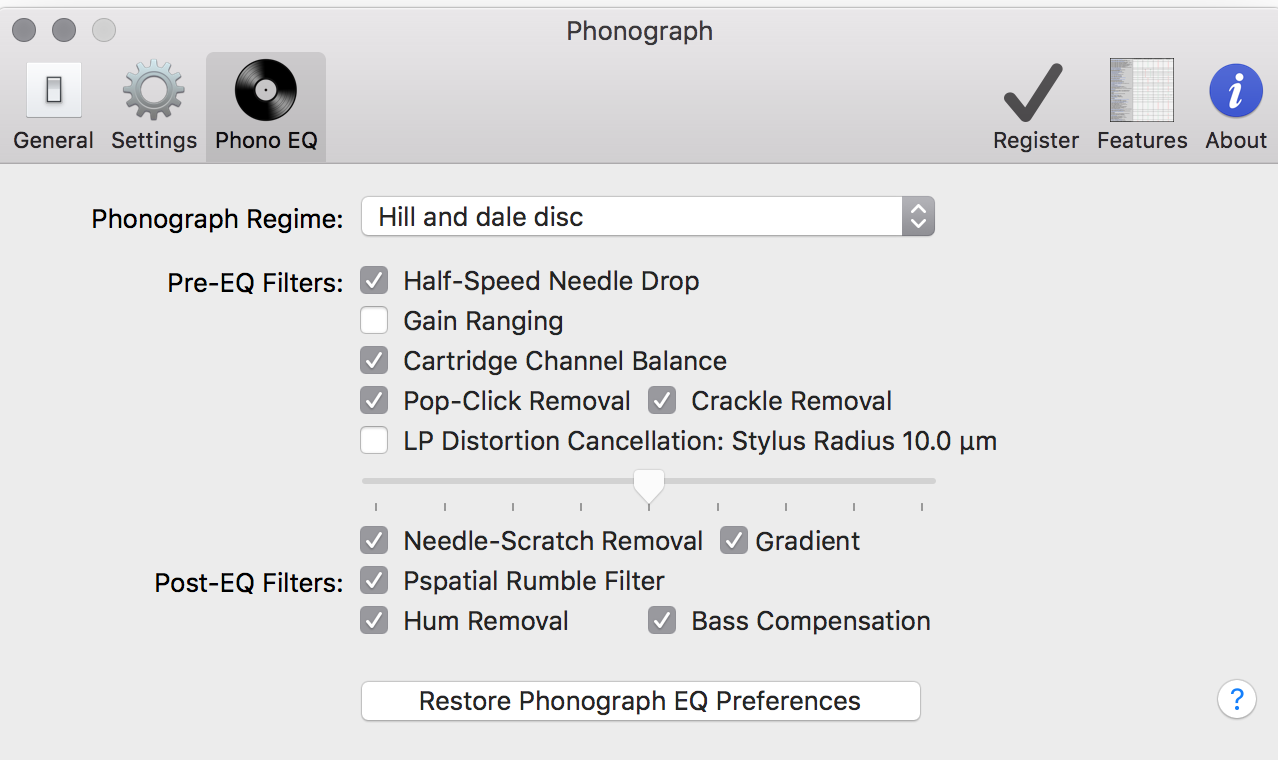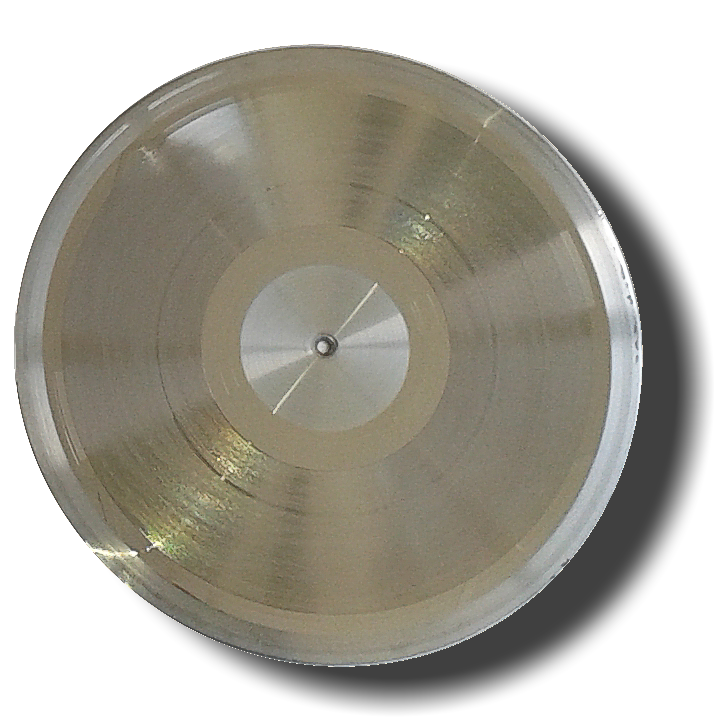


GRAδIENT stands for GRAmophone DIsc Enhanced Noise Treatment and is a unique noise-reduction process for shellac-era needle-drops introduced for the first time in Stereo Lab.
Seventy-eight RPM records were made of shellac. But a slate filler was added to the pure shellac to make it hard enough that the records could support multiple playings with a tone-arm weight measured in ounces! It is these particles of slate which contribute the harsh, surface-noise that we all associate with pre-vinyl records.
The development of GRAδIENT followed much work on Fourier-based noise-removal, all of which proved pretty disappointing. In our experience, by the time Fourier Transform based noise-reduction produces noticeable and worthwhile improvement in noise, it also introduces perceivable and unpleasant audio artefacts which include: "birdies" and a hollow "ringing" quality to the programme.
The GRAδIENT solution was empirically derived and was tested in extensive listening tests. It uses a unique algorithm which radically reduces surface noise without removing wanted high-frequency information. GRAδIENT also acts to reduce tracing distortion and correlated-noise due to groove damage. This is especially clear in the example of the needle-drop of the metal mother example given below.
GRAδIENT is selected in the Phono EQ preferences dialogue where the choice may be retained to use alternately a simple 7kHz low-pass filter, or indeed to opt for no surface-noise removal at all.

A demonstration of GRAδIENT is given here.
In this file the first minute of so of a recording of the Peer Gynt Suite by Grieg (LPO with Beecham - Columbia LX838) is noise reduced in 4 ways. In the first section, the recording is processed via Stereo Lab's de-click/ de-crackle algorithm. The second example adds the standard, needle-scratch filter. The third track substitutes the standard filter with GRAδIENT. Finally, for reference, the de-clicked version is processed by a well known (and expensive!) FFT-based noise reduction. We think you'll agree with us that GRAδIENT outstrips the other techniques.
If you are lucky enough to be able to obtain a recording direct from the metal mother where surface noise due to the ground-slate is not present, it's surprising to discover how many other noise-mechanisms are present on an old recording. Surface-noise is certainly not the only issue with needle-drops of 78s. This is especially so when the disc is correctly equalised and the high-frequency information is properly revealed. Most significantly, a great deal of damage due to tracing-distortion is present. GRAδIENT tackles these problems too (which it correctly determines to be noise). In this next demo, a needle-drop of the Horace Henderson Orchestra playing Rhythm Crazy derived from an Odeon-label copper-master is processed using GRAδIENT in Stereo Lab.
Once again, the first half of the recording illustrates the results of using Stereo Lab equalisation and crackle-reduction. The second half is the same needle-drop processed with GRAδIENT.
A final demo is here and brings the various advantages of software processing together. Here, the first half of the file is a recording of Ravel's Introduction and Allegro for Harp* recorded via a hardware preamplifier equipped the appropriate 300N-flat equalisation for a British Columbia release of the period. The second half is the same music recorded as a flat-response needle-drop and processed in Stereo Lab using EQ-G, Crackle Removal and GRAδIENT. The differences speak for themselves!
*Columbia DX 1310, DX 1311. with string quartet, flute and clarinet; harp solo by John Cockerill

GRAδIENT does much more than just reduce surface-noise
Links
 Pspatial Audio Home page
Pspatial Audio Home page
For all support issues, go here.
For Pspatial Audio sales, email: sales@pspatialaudio.com
